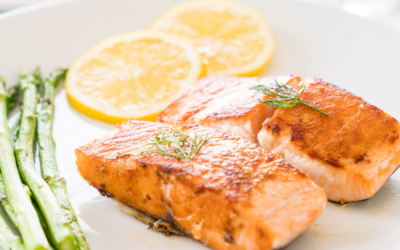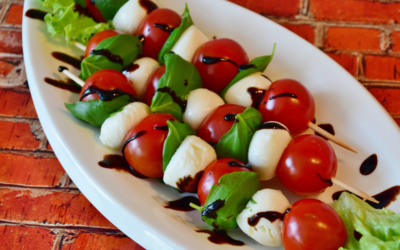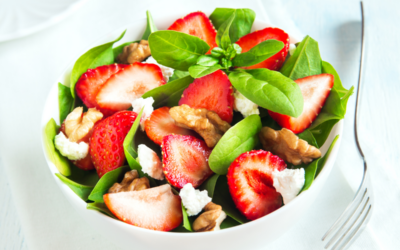Summary of key points
Chow Mein noodles, with their crispy texture, are typically fried, which adds extra calories and fat. On the other hand, Lo Mein noodles are usually boiled or steamed, making them a healthier choice in terms of reduced oil content. Additionally, Lo Mein often incorporates more vegetables, providing more fiber, vitamins, and minerals.
Chow Mein and Lo Mein are two popular Chinese noodles that have gained international recognition for their delicious flavors and versatile ingredients. Both dishes are loved for their combination of soft noodles, vibrant vegetables, and savory sauces, but they differ in their cooking methods and presentation.
Chow Mein, meaning “fried noodles” in Chinese, features crispy noodles that are stir-fried until golden brown, while Lo Mein, which translates to “tossed noodles,” showcases softer noodles mixed with various ingredients.
In this article, we’ll explore the characteristics and distinctions between Chow Mein and Lo Mein, delving into their unique textures, cooking techniques, and flavors that make them stand out in Chinese cuisine. Whether you’re a fan of the satisfying crunch of Chow Mein or the comforting simplicity of Lo Mein, both noodle dishes offer a delightful culinary experience that will leave your taste buds craving more.
What is the difference between Chow Mein and Lo Mein noodles?
Chow Mein and Lo Mein noodles’ primary differences are their preparation and texture. Chow Mein, which translates to “fried noodles” in Chinese, features crispy noodles that are stir-fried until they turn golden brown. The frying process gives Chow Mein its signature crunch and slightly toasted flavor.
On the other hand, Lo Mein, meaning “tossed noodles,” showcases soft and tender noodles that are typically boiled or steamed. The cooked Lo Mein noodles retain their original form and chewy texture. Regarding ingredients, both dishes often include vegetables, meat, and sauce, but the key difference lies in the noodle texture and cooking method.
Chow Mein offers a satisfying crunch, while Lo Mein provides a comforting, softer bite. Ultimately, the choice between Chow Mein and Lo Mein comes down to personal preference for texture and the overall eating experience.
Chow Mein and Lo Mein difference highlights
Chow Mein:
- Chow Mein translates to “fried noodles” in Chinese.
- The noodles used in Chow Mein are typically thin and either soft or crispy.
- Chow Mein noodles are stir-fried in a hot wok until golden brown and slightly crispy.
- The stir-frying process gives Chow Mein noodles a distinct texture and flavor.
- Chow Mein often includes a variety of ingredients such as vegetables, meat, and sometimes seafood.
- The ingredients are stir-fried together with the noodles, creating a flavorful and well-incorporated dish.
Lo Mein:
- Lo Mein translates to “tossed noodles” in Chinese.
- The noodles used in Lo Mein are typically thick and soft.
- Lo Mein noodles are boiled or steamed until they reach a tender and chewy consistency.
- The cooked noodles are then tossed with various ingredients such as vegetables, meat, or seafood in a flavorful sauce.
- Unlike Chow Mein, which has a slightly crispy texture, Lo Mein noodles are soft and retain their original form.
The tossed noodles and ingredients in Lo Mein provide a harmonious combination of flavors and textures.
Which noodle is healthier?
When choosing healthier options in Chinese cuisine, the debate between Chow Mein and Lo Mein noodles often arises. Both dishes feature delicious noodles, vegetables, and savory sauces, but their nutritional profiles can differ based on cooking methods and ingredients.
For example, Chow Mein may be perceived as less healthy with its crispy fried noodles due to the additional oil and calories involved. In contrast, Lo Mein noodles are typically boiled or steamed, making them a potentially healthier, and lighter choice.
However, determining the healthiness of chow mein versus lo mein can depend on various factors, including the specific ingredients, cooking methods, and portion sizes. Here are some points to consider:
- Noodle type: Both chow mein and lo mein noodles are typically made from wheat flour and eggs, so they have similar nutritional profiles. They provide carbohydrates, some protein, and small amounts of fat.
- Cooking method: Chow mein noodles are often fried or stir-fried, which can result in a higher calorie content due to the added oil. On the other hand, lo mein noodles are boiled and then stir-fried with less fat. If you’re concerned about calorie intake, choosing lo mein over chow mein may be a slightly healthier option.
- Ingredients and sauce: The overall healthiness of both dishes depends on the types and amounts of ingredients and sauces used. Both chow mein and lo mein can incorporate a variety of vegetables, protein, and spices. Choosing dishes with plenty of vegetables and lean protein while minimizing excessive oil and sodium can make both options healthier.
- Portion sizes and moderation: It’s important to consider portion sizes and moderation when enjoying either dish. Controlling the overall amount you consume is essential for maintaining a balanced diet.
Generally, when it comes to choosing between chow mein and lo mein for a healthier option:
- Opt for dishes with more vegetables and lean protein.
- Ask for less oil or sauce to reduce calorie and fat content.
- Choose whole wheat noodles if available, as they provide more fiber and nutrients than refined white flour noodles.
Ultimately, the healthiness of chow mein or lo mein depends on the specific ingredients used and the cooking methods employed.
Calorie content of Chow Mein and Lo Mein noodles
The calorie content of chow mein and lo mein can vary depending on the specific ingredients, cooking methods, and portion sizes. However, some general observations can be made:
- Chow Mein: Chow mein often involves frying or stir-frying the noodles, which can increase the calorie content due to the added oil. Additionally, protein sources like chicken, beef, pork, or shrimp and the sauce used can contribute to the overall calorie count. The calorie content of chow mein can range from around 400 to 800 calories per serving, depending on the portion size and ingredients used.
- Lo Mein: Lo mein typically involves less frying and oil usage compared to chow mein. The noodles are usually boiled and then stir-fried with the other ingredients. While the calorie content can still vary based on the types and amounts of components used, lo mein generally tends to have a slightly lower calorie count than chow mein. The calorie content of lo mein can range from around 300 to 600 calories per serving, depending on the portion size and ingredients used.
These are rough estimates, and the calorie content can differ based on specific recipes and variations. For example, if you want to manage your calorie intake, consider portion sizes, choose dishes with more vegetables and lean protein, and limit the amount of added oils or sauces.
How to cook Chow Mein and Lo Mein noodles
The cooking method is a crucial aspect that distinguishes chow mein and lo mein. So let’s delve into the cooking methods for each dish:
Chow Mein cooking method:
- Chow mein noodles are often stir-fried or fried.
- The noodles are typically cooked separately by boiling or soaking in hot water until partially cooked and drained.
- In a wok or skillet, the noodles are stir-fried over high heat, along with vegetables, protein, and sauce.
- The stir-frying process involves tossing the ingredients continuously, allowing them to cook quickly and evenly.
- The high heat and continuous tossing create a crispy texture for the noodles while blending the ingredients’ flavors.
Lo Mein cooking method:
- Lo mein noodles are usually boiled until they are soft and fully cooked.
- Once the noodles are cooked, they are drained and set aside.
- The vegetables, protein, and sauce are stir-fried in a separate wok or skillet over medium heat.
- After the ingredients are cooked to the desired doneness, the cooked noodles are added to the wok and tossed with the sauce and ingredients.
- The tossing process ensures that the sauce coats the noodles and ingredients, allowing them to combine and absorb the flavors.
Sauces and ingredients to use when cooking Chow Mein and Lo Mein noodles.
Chow Mein sauce and ingredients
- Sauce: Chow mein is typically seasoned with spices to enhance its flavor. Typical sauces used in chow mein include soy sauce, oyster sauce, hoisin sauce, and sesame oil. The specific combination of sauces can vary based on personal preferences and regional variations. These sauces provide a savory and umami taste to the dish.
- Ingredients: Chow mein typically includes various components such as vegetables, protein, and noodles. The vegetables can include cabbage, carrots, bell peppers, bean sprouts, mushrooms, and more. Standard protein options include chicken, beef, pork, shrimp, or tofu. These ingredients are stir-fried together with the noodles and sauces, allowing their flavors to blend and create a well-rounded dish.
Lo Mein sauce and ingredients
- Sauce: Lo mein is also tossed in a flavorful sauce that coats the noodles and ingredients. The sauce for lo mein often includes a mixture of soy sauce, oyster sauce, sesame oil, and other seasonings. The combination of spices provides a rich and savory taste to the dish.
- Ingredients: Lo mein commonly incorporates various components such as vegetables, protein, and noodles. Vegetables like broccoli, carrots, snow peas, and mushrooms are widely used. For protein, options like chicken, beef, pork, shrimp, or tofu can be included. These ingredients are stir-fried with the noodles and sauce, allowing the flavors to meld together, and creating a delicious and well-balanced dish.
Takeaway
Chow Mein and Lo Mein noodles are delicious, but several factors must be considered when determining the healthier option. While both dishes can be made with nutritious ingredients like vegetables and lean protein, their cooking methods and ingredients can affect their nutritional profiles.
While Lo Mein is the healthier option, the chef’s specific ingredients and cooking techniques determine how healthy a dish is. Those seeking a more nutritious alternative can choose Lo Mein noodles, choosing lean proteins and adding plenty of colorful vegetables to enhance their nutritional value. Nonetheless, moderation and mindful ingredient selection are crucial to enjoying these delicious noodle dishes.















